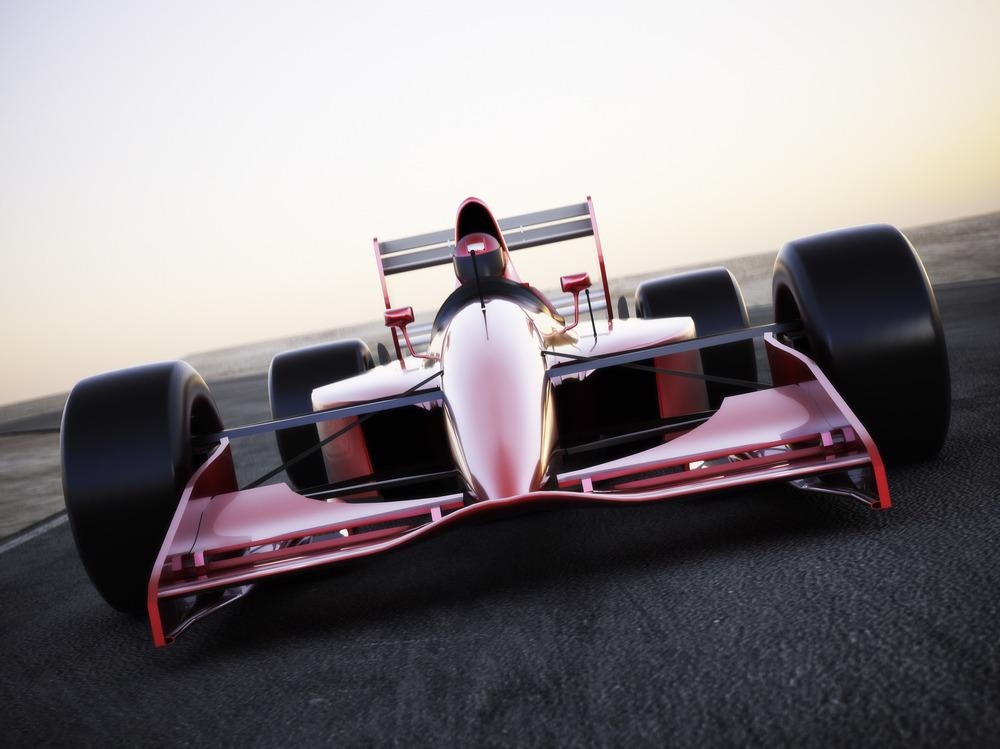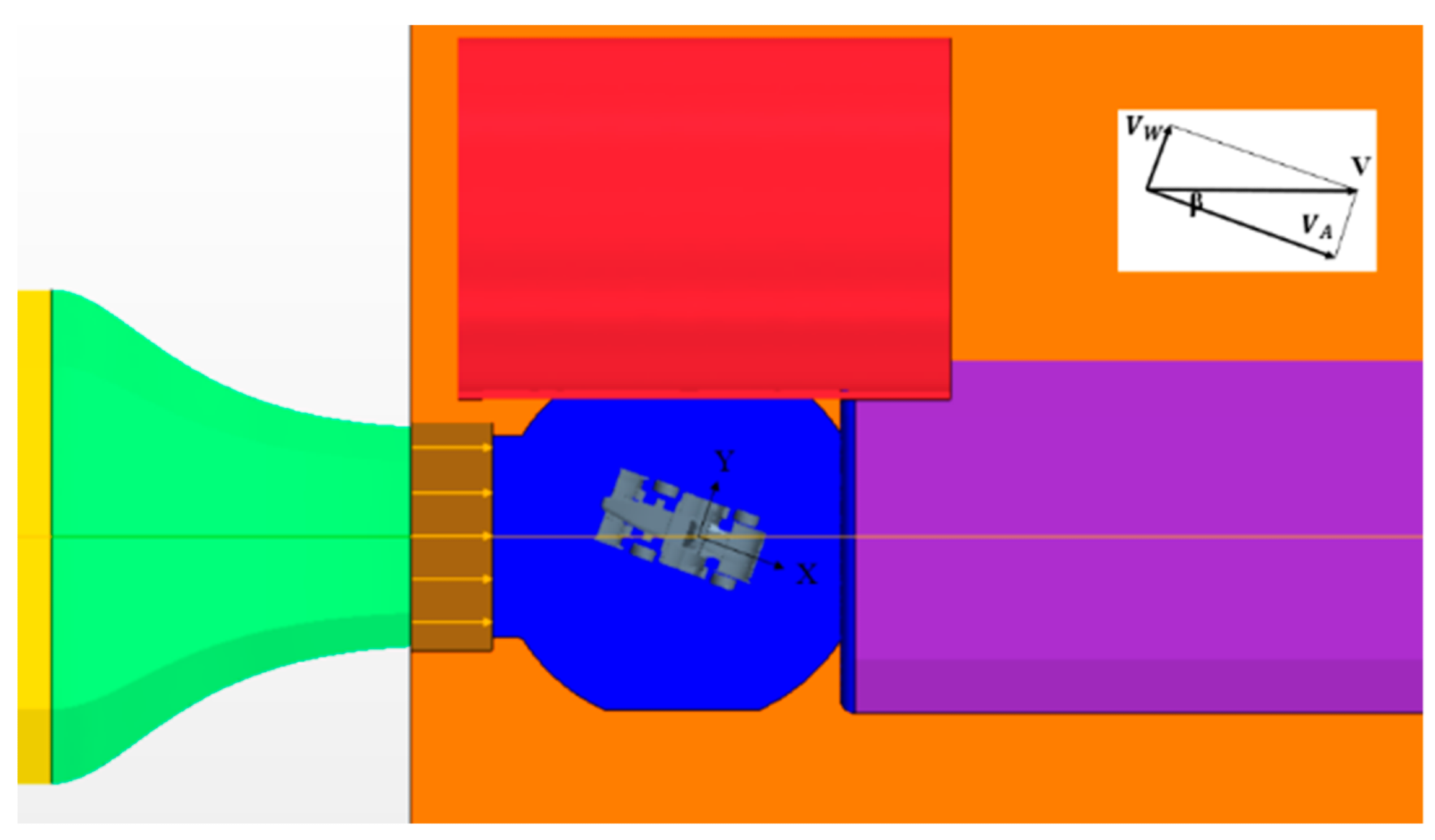.jpg) By Susha Cheriyedath, M.Sc.Reviewed by Skyla BailyJan 17 2022
By Susha Cheriyedath, M.Sc.Reviewed by Skyla BailyJan 17 2022A group of researchers recently published a paper in the journal Materials that demonstrated the effects of different body attitudes on the aerodynamic characteristics and handling stability of racing cars.

Study: Joint Research on Aerodynamic Characteristics and Handling Stability of Racing Car under Different Body Attitudes. Image Credit: Digital Storm/Shutterstock.com
Significance of Aerodynamics in Racing Cars
Aerodynamics is one of the crucial aspects of racing cars. Good handling stability and power performance can be obtained by aerodynamically optimizing the external flow field of the racing cars. Until now, the aerodynamic characteristics of racing cars were mostly analyzed under steady-state basic conditions. Thus, the current study focused on the effects of different body attitudes on the handling stability and aerodynamic characteristics of racing cars.
The Study
In this study, the researchers conducted aerodynamic dynamics and numerical simulation of the racing car system along with the wind tunnel test. They developed a closed-loop design process for the aerodynamic parameters of the FSAE racing car and adjusted the aerodynamic parameters of the car based on the handling stability.

Simplified racing model. Image Credit: Zhang, Z et al., Energies
Using numerical simulation calculations, accurate numerical simulation strategies were determined for simulations of different working conditions under various crosswind effects and different body attitudes.
In the wind tunnel test, the aerodynamic six-component force of the racing car was initially calculated under linear conditions, and then the crosswind angle of the side-wind dynamic characteristics was measured from -15o to +15o. A STAR-CCM+ software was used for aerodynamic simulation analysis of the racing car under different working conditions.
The aerodynamic parameters such as flow field structure, aerodynamic torque, and aerodynamic force were studied and analyzed in every working condition for obtaining the data required for dynamics simulation.
The CarSim software was used for thoroughly evaluating the impact of aerodynamic characteristics on the handling stability of the racing car. The pitch working condition of the car was analyzed from -2.0o to 1.0o. The simulation wind velocity was fixed at 15 m/s, and the body pitch angle was incremented by 0.5o. The working condition of the positive crosswind angle was simulated in the study, while the working condition data of the negative crosswind angle was obtained from the positive working condition.

FSAE racing car of Jilin University. Image Credit: Zhang, Z et al., Energies
Observations
The observations by the team during the analysis of pitch working conditions indicated that the lift-drag ratio was minimum at 0.5o, while the aerodynamic efficiency of the car was lowest in different pitching conditions. The pitching moment was the smallest at -1.0o, while the pitching moment coefficient was the largest at 1.0o.
Additionally, the downforce of the car body and the front wing was greater than that of the tail wing. The negative pressure area of the tail flap decreased owing to the impact of the up-flow through the aerodynamic components in the front of the car.
The aerodynamic characteristics of the car were reduced significantly between the crosswind angle of 0o and 40o, where the aerodynamic suite can be used to improve the handling stability of the car. However, the aerodynamic suite fails when the crosswind angle is higher than 400. Thus, 0-40o was determined as the effective working range for the aerodynamic kit under crosswind conditions.
The dynamics model was simulated for analyzing the impact of aerodynamic characteristics on handling stability. Observations from the simulation results indicated that the car track movement displays a tendency to go back when the direction of the crosswind changes, although the horizontal offset continues to rise.
Additionally, the crosswind angle velocity and roll angle velocity of the car reached the highest value on the same side of the monsoon period. Thus, the car can leave the track if the driver operates the car in a manner that severely affects the car's stability.
The dynamics and aerodynamic system of the car were simulated to study the impact of different aerodynamic conditions on the handling stability of the car.
Observations from the aerodynamic force modification indicated that the ultimate cornering speed of the car significantly improved under constant dynamics parameters, while the observations from the aerodynamic torque modification indicated that the ultimate cornering speed of the car slightly increased under the same parameters. In the final modification plan, the aerodynamic downforce of the car was increased considerably, while the drag was decreased slightly.

Yaw model method for wind tunnel test. Image Credit: Zhang, Z et al., Energies
Significance of the Study
The study demonstrated that the critical cornering speed of the racing car increased after the final modification, while the horoscope test time decreased by 0.525s. Additionally, the maneuverability of the racing car, the lift-to-drag ratio, and the downforce increased while the drag was reduced.
Moreover, the pitching moment of the car decreased substantially, while the aerodynamic efficiency improved after the modifications. Taken together, the findings prove that aerodynamic modification of race cars can greatly improve their handling stability and overall performance.
Disclaimer: The views expressed here are those of the author expressed in their private capacity and do not necessarily represent the views of AZoM.com Limited T/A AZoNetwork the owner and operator of this website. This disclaimer forms part of the Terms and conditions of use of this website.
Source:
Zhang, Z., Wang, Q., Song, S. et al. Joint Research on Aerodynamic Characteristics and Handling Stability of Racing Car under Different Body Attitudes. Energies 2022, 15, 393. https://www.mdpi.com/1996-1073/15/1/393